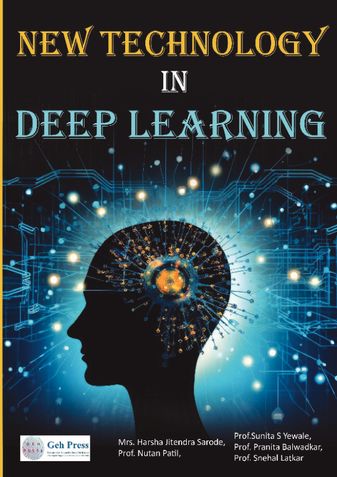You can access the distribution details by navigating to My Print Books(POD) > Distribution
New technology in Deep Learning
Harsha Jitendra Sarode, Nutan Patil, Sunita S Yewale, Pranita Balwadkar, Snehal Latkar
Description
Inventors have long dreamed of creating machines that think. This desire dates back to at least
the time of ancient Greece. The mythical figures Pygmalion, Daedalus, and Hephaestus may
all be interpreted as legendary inventors, and Galatea, Talos, and Pandora may all be regarded
as artificial life (Ovid and Martin, 2004; Sparkes, 1996; Tandy, 1997). When programmable
computers were first conceived, people wondered whether they might become intelligent, over
a hundred years before one was built (Lovelace, 1842). Today, artificial intelligence (AI) is a
thriving field with many practical applications and active research topics. We look to intelligent
software to automate routine labor, understand speech or images, make diagnoses in medicine
and support basic scientific research. In the early days of artificial intelligence, the field rapidly
tackled and solved problems that are intellectually difficult for human beings but relatively
straightforward for computers—problems that can be described by a list of formal,
mathematical rules. The true challenge to artificial intelligence proved to be solving the tasks
that are easy for people to perform but hard for people to describe formally—problems that we
solve intuitively, that feel automatic, like recognizing spoken words or faces in images.
About the Authors
Book Details
Ratings & Reviews

Currently there are no reviews available for this book.
Be the first one to write a review for the book New technology in Deep Learning.
Other Books in Science & Technology
Oum Pratap Singh, Sandeep Kumar Jain
Dr. Adarsh Pandey, Dr. Renu Sharma, Dr. Reema ...
Raja Ram Mohan Roy




